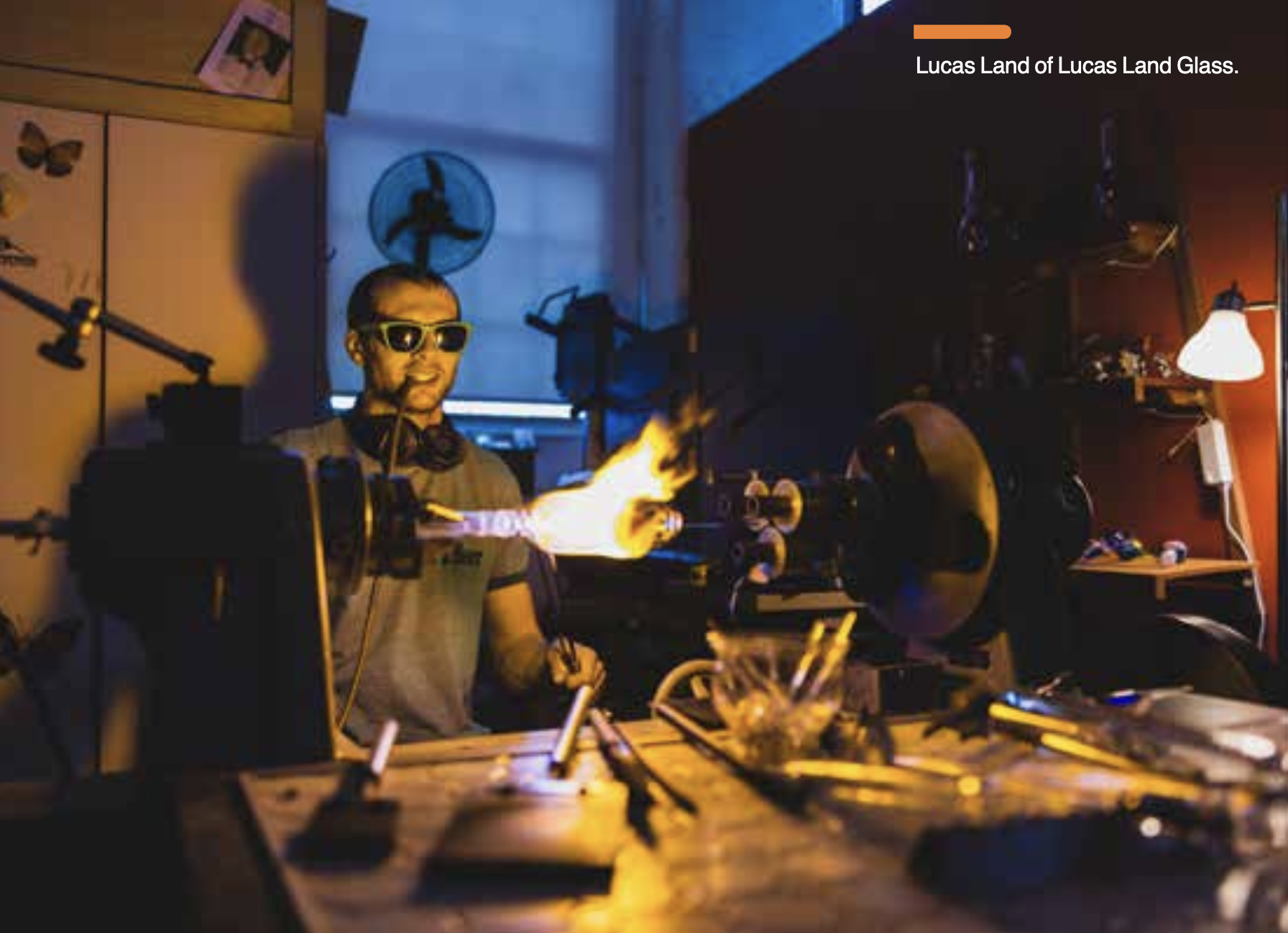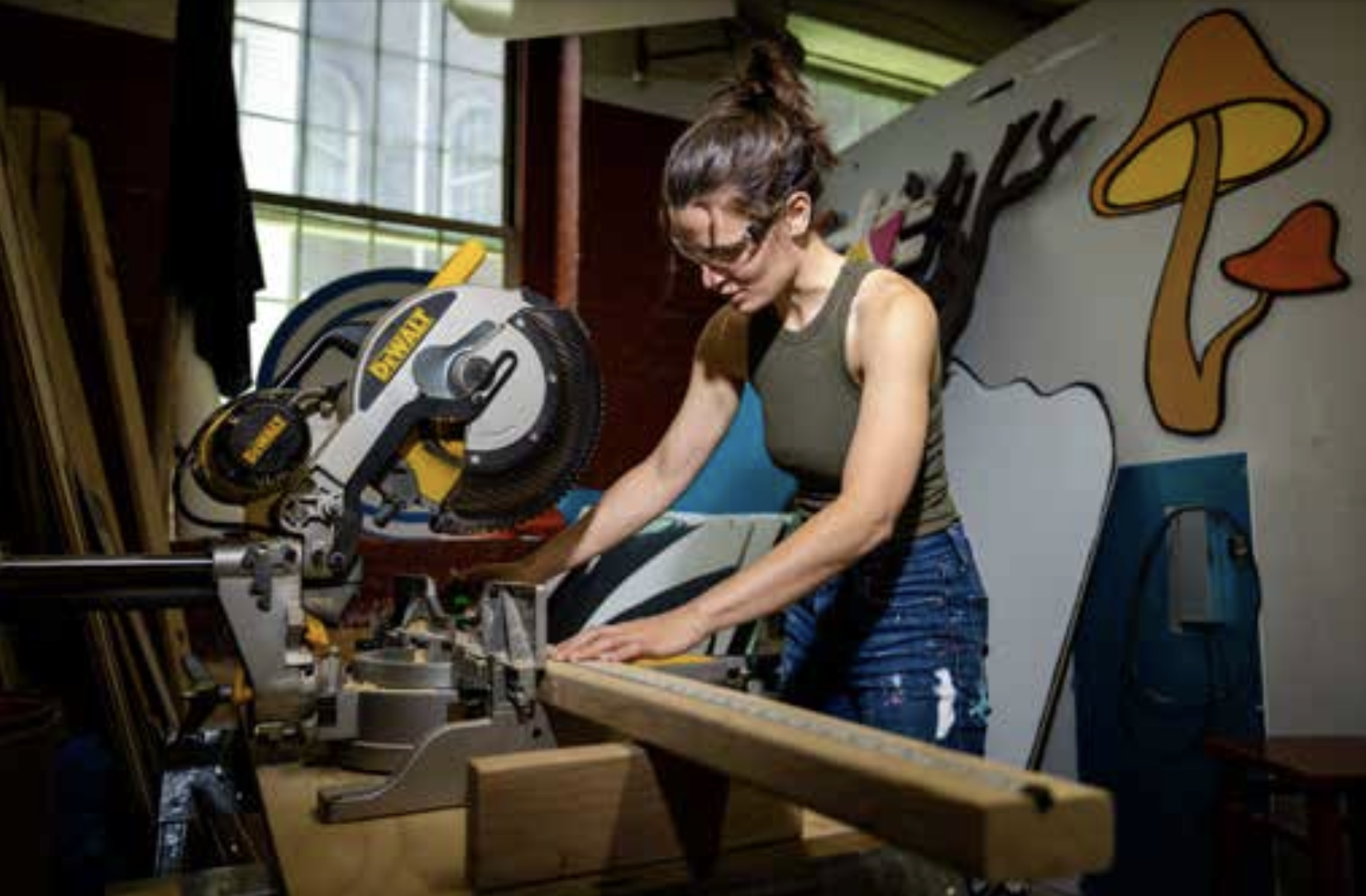Artscope Magazine: A Solution to Arts Displacement
Published in Artscope in the March/April 2023 Issue; By Ami Bennitt
A&BC’S CREATIVE CAMPUS INITIATIVE
Arts displacement, although a systemic, chronic problem in Greater Boston, also takes toll outside the metropolitan area, in once industrial Massachusetts cities like Worcester, Lowell, New Bedford and Salem.
The Arts & Business Council of Greater Boston (A&BC), whose initiatives include Volunteer Lawyers for the Arts, Business on Board, artist fellowships, and others, including Creative Campus, its solution to creating and/or preserving arts/cultural spaces. It is currently partnering with Creative Hub Worcester, transforming a historic Boys Club into artist workspaces and public gallery/performance spaces.
THE CULTURAL SOUL OF LOWELL
Last year, the A&BC acquired one of New England’s gems: Western Avenue Studios in Lowell, so it could stay as an affordable home to hundreds of artists across multiple disciplines. Coined “the creative soul of Lowell,” it hosts one of the biggest artist communities in the country: 250 workspaces, 50 live/workspaces, galleries and performance venues, shops and cafes. Originally bought in 2005 by Karl Frey, it began with 33 artist studios, and over time, expanded. Workspaces over five floors range from $175-800/month (including utilities). Artists can participate in the onsite galleries and monthly Open Studios events every first Saturday from 12 to 5 p.m. Every medium is represented, including illustrators, glass blowers, stone carvers, woodworkers, photographers, fiber artists, writers, graphic designers, jewelry makers, ceramicists, metal workers, printmakers and multi-media artists. There’s even a shared darkroom, a book bindery — and pets are welcome.
Frey, although still involved, wanted to secure the future of this special community — through the Greater Lowell Community Foundation, Frey connected with Jim Grace, executive director for the A&BC for 24 years. Through creative financing they were able to acquire the creative campus so it can remain affordable artist spaces.
FROM ALLSTON TO LOWELL: ONE STUDIO LOST, ANOTHER FOUND
Ironically (or not so), one of the first visual delights was the onsite artisan shop, part of the Loading Dock Gallery. Their newest artist, Anne-Marie Delaunay-Danizio, showcases her textile “critters” and whimsical illustrative paintings, like “New Growth.” I met her over the summer at her former artist Lucas Land of Lucas Land Glass.
Her studio was already packed and ready to move to Western Avenue Studios, because the property is being developed into labs, retail, and affordable housing. Delaunay-Danizio is the living example of artist displacement. Her new home at Western Avenue Studios is 35 miles (give or take an hour’s drive) from 119 Braintree Street.
“By itself,” Delaunay-Danizio said, “Western Avenue Studios is almost an entire city focused on art and crafts. It’s a complex operation, and excellently managed by Hope Greene. Thanks to photographer/tenant Henry Marte (who also serves as Media Manager), there’s great communication between tenants and administrators. Whenever there is an issue, it is immediately addressed. The cooperative Loading Dock Gallery and monthly Open Studios are very conducive to building business. They are well-attended and advertised.”
Kyle Ahern of Ahern Jewelry Designs.
Jaina Cipriano of Finding Bright Productions
OPEN STUDIOS: FIRST SATURDAYS
Katren Cleo (studio 269) is a charcoal portrait artist who has been at Western Avenue Studios for a year. She took drawing lessons from fellow Western Avenue Studios artist Nancy Lesofsky, who shepherded Cleo in. “I get so much support from fellow studio artists and also the visiting community,” Cleo shared. “The feedback has been the biggest proponent of moving my practice ahead. I come here every day to a dedicated space to create. I get nourished by seeing other artists creating. It makes me create more. Open Studios is the best day of the month for me.”
In addition to the 300 workspaces, the campus includes 50 artist live/workspace lofts ranging from 790-1660 square feet ($1100-2150). Lautaro Mantilla, originally from Columbia, both earned his advanced degrees in composition from New England Conservatory and teaches there now. He shares his loft with artist/designer partner Grace Wilson and their rescue cat, Poncho.
CUSTODIAN OF ARTIST COMMUNITY
Mantilla’s live/workspace journey has taken him a while to solidify. He has been a loft tenant since September, and he and Wilson are still transforming it into their creative home. “Timing is important,” he said. “I’m grateful that as a musician, the artist lofts are open to me and my music. Being here, I’m part of a community. I’m not displaced, I’m actually inspired and nourished with possibilities.” He shared a story about a music teacher he had who considered himself a “custodian” of antique instruments — like how Karl Frey and Jim Grace are “custodians” or “stewards” of Western Avenue Studios. “This is how we often make decisions,” explained Property Manager (and photographer) Hope Greene. “We look through a lens of ‘how will this play out 100 years down the line...’”
The lofts building also includes the Storage Closet Gallery, a small, yet not too small space for tenants to showcase work. While visiting, I took in Robb Sandagata’s “Company Meeting” exhibition, filled with strikingly colorful “grotesque narrative artworks inspired by three years of mostly working from home.” Originally from Connecticut, Sandagata, also a lofts tenant, has shown his pop-culture-influenced illustrations in solo and group exhibitions throughout the region.
I left Lowell in a cozy cocoon of visual stimulation and emotion. I am so grateful for Western Avenue Studios. It’s what an artist community should be — thriving, diverse, welcoming, supportive, additive (and with a waitlist). We need more of them. Hopefully, between the continued work of the Arts and Business Council, advocacy by the #ARTSTAYSHERE Coalition and support from cities, the state and foundations, more arts/music/cultural communities will be built, preserved and nourished, instead of torn down, sold or developed.
PRESERVING INTO THE FUTURE
“The arts and the creative sector need easier and quicker access to funding in order to take advantage of real estate opportunities,” shared Jim Grace. “We need to be able to compete with commercial developers who have funds at the ready, if we want a chance at preserving arts/cultural spaces.”



